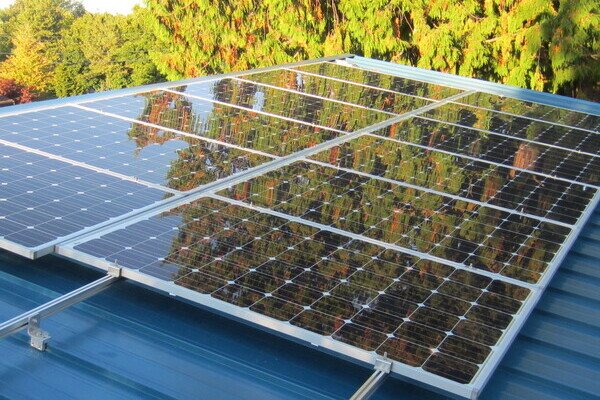
What is the difference between net zero energy vs carbon neutral? What does it mean? And why is it important?
We mention the term ‘net zero’ a lot, and often without following it up with the word ‘energy’, but typically when we say this, we are referring to net zero energy. Up until recently in the construction industry, companies were only focused on reducing energy consumption. However, there is a new push to also reduce one’s carbon footprint as well, so the terms ‘net zero carbon’ and ‘carbon neutral’ are making waves as well.
Net Zero Energy
Firstly, we must define net zero energy. Net zero energy is when the amount of energy that a house consumes post-construction is equal to the amount of energy that the house produces via renewable energy. A home typically achieves net zero energy with a solar array, although other renewable energy sources such as wind or thermal could also be used. A home can also be considered net positive energy if it produces more energy than it consumes. That extra energy can be stored on-site with a battery system, can be used to charge an electric vehicle, or can simply enter the grid system. There are certain cities and legacy accounts where net-metering is allowed which, simply put, pays a homeowner for the energy they produce beyond what is consumed from the grid (e.g. the output is greater than the input and the difference gets paid back to the homeowner).
When talking about net zero energy, it’s hard not to talk about the HERS Index as well. The HERS Index, which stands for Home Energy Rating System Index, is a standardized rating system used in the construction industry to compare the energy efficiency of homes. As seen in the image below, the standard home sits at a HERS rating of anywhere from 60-100 constructed to the code minimum. But as contractors take more steps towards energy efficiency, the home’s HERS rating will inevitably fall. Typically, a home without any kind of energy production system, like a solar array, cannot get lower than a HERS rating of 20-30. In order to achieve anything lower than that and get to a HERS rating of 0, indicating the home has reached net zero energy, there will have to be on-site energy production.

Carbon Neutral
On the other hand, there is tracking of a home’s carbon footprint. The carbon being referred to is CO2 which is a major greenhouse gas. Measuring a home’s carbon footprint entails tracking the carbon produced from the beginning production of all the home’s materials, through delivery, installation, maintenance, and ultimate discarding at the end of its life cycle. So, when a home is considered carbon neutral, it means that the carbon produced through its life (the combination of all the material’s lifecycles) has been equally offset. To offset the carbon produced, an increasing amount of ‘carbon sinks’ must be used. That means that the product, like wood, actually stores or actively removes carbon from the atmosphere, as opposed to a material that only off-gasses or produces CO2 during its lifecycle.
Why is net zero energy & carbon neutrality important?
While net zero energy is only focused on energy efficiency, one of the reasons we work towards more efficient homes, is to reduce our carbon footprint. Since fossil fuels are the biggest emitters of CO2, reducing reliance on them and using renewable energy helps reduce the CO2 emitted by each house. Therefore, net zero energy and carbon neutrality do go hand-in-hand. Both are aiming for the same goal in the end, which is to reduce our impact on the environment and specifically on climate change. There are other benefits of net zero energy though, including reducing a home’s electric bills, which makes retirement budgeting more predictable and effectively makes the cost of living cheaper in the future. In order to achieve net zero energy, a home’s construction also changes which creates other added benefits, like a tightly sealed house where your heated and cooled air won’t be escaping, thereby creating a more comfortable home. There will also be utilization of more natural light which makes a space feel more inviting and livable.
At TC Legend Homes and Powerhouse Designs, we are committed to building only net zero energy homes or net zero energy ready homes and are actively working to reduce our home’s overall carbon footprint for a carbon neutral future!
If you’re interested in learning more about our net zero energy homes or want to get started designing your very own net zero energy home, contact us today! We also offer pre-made net zero energy home plans!
